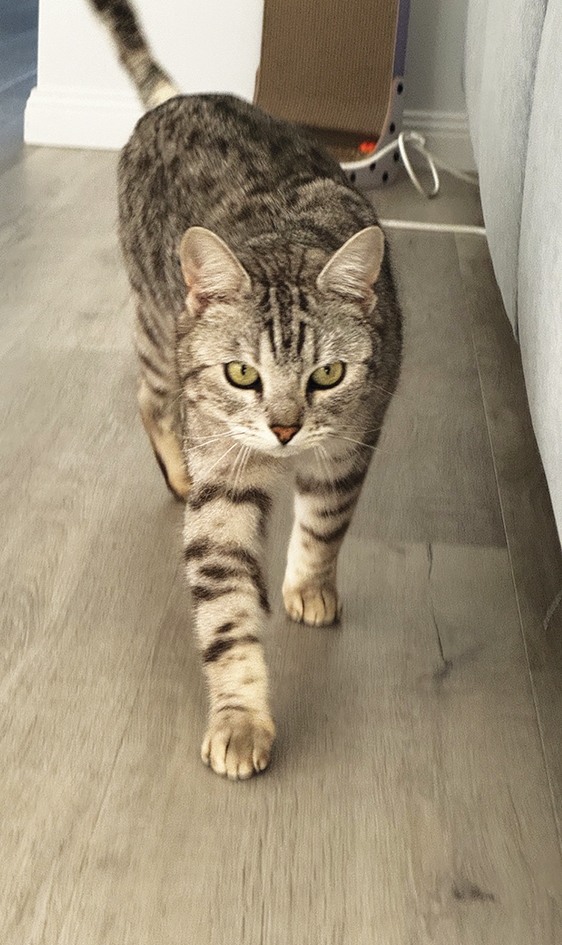By Kellie Tickner, Orchard Hills Veterinary Hospital Administrator
WHEN four-year-old Ollie arrived at Orchard Hills Veterinary Hospital, his family knew something was terribly wrong. Normally an affectionate cat who never missed the chance for a pat or his dinner, Ollie was suddenly lethargic, refusing food, and reluctant to move. When his owner picked him up, Ollie reacted in uncharacteristic pain, even trying to bite—a sign of just how much discomfort he was in.
On examination, Dr. Dilshara and Dr. Camille discovered puncture wounds around Ollie’s tail, rump, and genital region. These were clear signs of a cat fight, and the mystery was confirmed when, during clipping and cleaning, a cat’s nail was found embedded in his skin. Despite receiving pain relief and antibiotics, Ollie’s condition deteriorated as inflammation took hold. The skin on his tail, inner thighs, and around his genital region became badly necrotic, eventually sloughing away in large sections.
The severity of the tissue damage meant suturing wasn’t an option—there simply wasn’t enough healthy skin to close the wounds. Even a skin graft would not have closed the wounds. Faced with this challenge, Dr. Camille chose an innovative approach: Phovia Fluorescent Light Therapy (FLE).
Phovia is a veterinary treatment designed to accelerate wound and skin healing in pets. The process involves applying a special orange gel containing chromophores to the affected skin, then exposing it to blue LED light. This light activates the gel, generating fluorescent light energy at multiple wavelengths. These wavelengths penetrate the skin at different depths, stimulating its natural regeneration processes.
The therapy offers multiple benefits: it accelerates healing, reduces inflammation, and helps control bacteria. Importantly, it is non-invasive and drug-free, reducing reliance on antibiotics and playing a role in combating antimicrobial resistance. Pets typically tolerate the sessions very well, with no need for sedation.
For Ollie, Phovia proved to be a true turning point. Over the past two months, his wounds have improved remarkably. What started as a small injury that progressed into extensive skin necrosis has now regenerated healthy tissue, eliminating the need for surgery. Thankfully, the affected area did not involve his rectum or genitals, which could have caused far more serious complications.
Thanks to the dedication of Ollie’s owners—who carefully cleaned his wounds and made sure his e-collar stayed on to prevent him from licking—his recovery has been remarkable. While he still needs some ongoing care, Ollie is regaining his strength and returning to his affectionate, familiar self, the much-loved cat his family knows and loves.
Ollie’s story is a reminder of the dangers cats face outdoors, from territorial disputes to hidden injuries. It also highlights the importance of veterinary innovation. Treatments like Phovia not only offer hope for complex wounds but also demonstrate the evolving ways veterinarians can provide better outcomes for pets.
Thanks to his family’s quick action and the dedicated care of the Orchard Hills team, Ollie is well on his way back to full health—and perhaps, a quieter life indoors.




